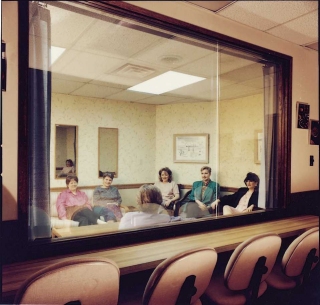Focus Group to Focus On

Focus groups can provide cherished, information that can accrue your company’s market share. The aftermath from focus groups can be estimable and the insights obtained can lead to an improved product or service consumers really want and will buy.
Once you determine your objective, the next step is come up with five or six relevant open-ended questions to discuss in a group setting. Focus groups generally consist of six to 10 people with some targeted commonality, such as age, sex, income, or interest, who will provide opinions in a free discussion format for about 90 minutes.
Have agenda for the proceedings and give participants an idea about what their discussion topics will be so they can come prepared for the task at hand. Record or videotape the roundtable discussions so you can follow up with participants with a summary report. Make sure participants understand they’ll be recorded as well as issued a report about the discussion.
It requires a moderator or a facilitator to steer the panel and elicit ideas and opinions from all participants. It’s important to lead the discussions impartially so participants speak frankly and feel uninhibited; but it’s also critical to rein in participants when the conversation goes off track.
The discussions that the group gets into needs to be evaluated and should take into consideration all the points that are being discussed and brief report of the same should be prepared. Analysis of the same is to be done and conclusion of the same should be made.
The process in short goes like this
Preparing for Session
Developing Questions
Planning the Session
Facilitating Session
Immediately After Session
The benefits of focus groups
Diverse Participants
Group Dynamics
Nonverbal Component
Open-endedness
Ease of Implementation
Focus groups:
Are used at preliminary stage of study
Used to develop programme of activities
To generate further avenues of research
To generate hypothesis
Used in decision making
Used in market research
Used by industrial setting by b2b marketers
To test communications programs
To discover more about consumer habits
To gather information about consumer attitudes and perceptions
They are Cost-effective
Relatively easy to assemble, inexpensive and flexible in terms of format, types of questions and desired outcomes
Good for groups with lower literacy levels (e.g. young children, English as a second language)
Open recording allows participants to confirm their contributions
Provide rich data through direct interaction between researcher and participants,
Spontaneous, participants not required to answer every question; able to build on one another's responses;
Help people build new connections
With all the benefits you have out of the focus group taking these concept with its practical applications you can help develop your efforts in business

Focus groups can provide cherished, information that can accrue your company’s market share. The aftermath from focus groups can be estimable and the insights obtained can lead to an improved product or service consumers really want and will buy.
Once you determine your objective, the next step is come up with five or six relevant open-ended questions to discuss in a group setting. Focus groups generally consist of six to 10 people with some targeted commonality, such as age, sex, income, or interest, who will provide opinions in a free discussion format for about 90 minutes.
Have agenda for the proceedings and give participants an idea about what their discussion topics will be so they can come prepared for the task at hand. Record or videotape the roundtable discussions so you can follow up with participants with a summary report. Make sure participants understand they’ll be recorded as well as issued a report about the discussion.
It requires a moderator or a facilitator to steer the panel and elicit ideas and opinions from all participants. It’s important to lead the discussions impartially so participants speak frankly and feel uninhibited; but it’s also critical to rein in participants when the conversation goes off track.
The discussions that the group gets into needs to be evaluated and should take into consideration all the points that are being discussed and brief report of the same should be prepared. Analysis of the same is to be done and conclusion of the same should be made.
The process in short goes like this
Preparing for Session
Developing Questions
Planning the Session
Facilitating Session
Immediately After Session
The benefits of focus groups
Diverse Participants
Group Dynamics
Nonverbal Component
Open-endedness
Ease of Implementation
Focus groups:
Are used at preliminary stage of study
Used to develop programme of activities
To generate further avenues of research
To generate hypothesis
Used in decision making
Used in market research
Used by industrial setting by b2b marketers
To test communications programs
To discover more about consumer habits
To gather information about consumer attitudes and perceptions
They are Cost-effective
Relatively easy to assemble, inexpensive and flexible in terms of format, types of questions and desired outcomes
Good for groups with lower literacy levels (e.g. young children, English as a second language)
Open recording allows participants to confirm their contributions
Provide rich data through direct interaction between researcher and participants,
Spontaneous, participants not required to answer every question; able to build on one another's responses;
Help people build new connections
With all the benefits you have out of the focus group taking these concept with its practical applications you can help develop your efforts in business
